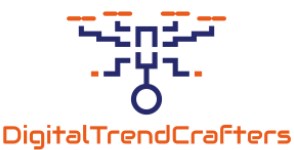Introduction
The integration of touchscreens into automotive displays has revolutionized the way we interact with vehicles. Modern cars are increasingly equipped with touchscreen technology, offering a wide range of applications from infotainment to safety enhancements. This article delves into the multifaceted uses of touchscreens in automotive displays, highlighting their advantages and significant applications.
Touchscreen Applications in Automobiles
Touchscreens are utilized in various facets of automotive technology. The following table summarizes the primary applications of touchscreens in modern vehicles:
| Application | Description |
|---|---|
| Infotainment Systems | Provides entertainment, music control, and social media integration. |
| Navigation Systems | Offers GPS navigation, real-time traffic updates, and route planning. |
| Climate Controls | Adjusts temperature settings, seat heating, and ventilation options. |
| Safety Features | Displays important alerts, rearview camera feed, and assists in parking. |
| Vehicle Settings | Allows customization of driving modes, suspension, and other preferences. |
Infotainment Systems
One of the primary uses of touchscreens in automotive displays is to power infotainment systems. Modern infotainment systems are the central hub for entertainment, incorporating features like:
- Music and Audio Controls
- Streaming Services Integration
- Hands-free Calling and Texting
- Social Media Access
- App Control (e.g., Spotify, Apple Music)
With touchscreens, accessing and controlling these features is more intuitive, allowing drivers and passengers to easily navigate through various options without the distraction of physical buttons.
Navigation Systems
Touchscreen-enabled navigation systems provide a more interactive and user-friendly experience. These systems offer:
- Real-Time Traffic Updates
- GPS Navigation
- Route Planning
- Points of Interest (POI) Information
- Voice Commands and Touch Controls
By using touchscreens, drivers can input destinations quicker, zoom in and out of maps seamlessly, and adjust routes on the fly, enhancing overall travel convenience and safety.
Climate Controls
Another significant application of touchscreens in cars is for climate control. Traditional dials and knobs are increasingly being replaced with touchscreen interfaces that allow for:
- Temperature Adjustments
- Fan Speed Control
- Seat Heating/Cooling Options
- Customized Climate Zones
This modernization not only provides a cleaner dashboard look but also adds flexibility and precision in managing the cabin environment.
Safety Features
Touchscreens also play a crucial role in enhancing vehicle safety. They are used to display:
- Rearview Camera Feeds
- Blind Spot Monitoring Alerts
- Lane Departure Warnings
- Parking Assistance Guidance
- Collision Avoidance Systems
These features make the driving experience safer by providing essential data and alerts directly on the screen, ensuring drivers stay informed and vigilant.
Vehicle Settings
Modern vehicles allow extensive customization, and touchscreens make it easy for drivers to adjust various vehicle settings, such as:
- Driving Modes (Comfort, Sport, Eco)
- Suspension Settings
- Lighting Preferences
- Seat and Mirror Positions
- Dashboard Display Configurations
Touchscreens in vehicle settings enhance the ability to personalize driving experiences according to individual preferences, adding to the convenience and overall enjoyment of driving.
Technological Advancements
The continuous evolution of touchscreen technology has introduced several advancements in automotive displays, including:
- Capacitive Touchscreens: Utilizing the driver’s touch for a more responsive and accurate input.
- Haptic Feedback: Providing tactile responses to touch inputs for better control.
- High-Resolution Displays: Offering crystal-clear visuals for better readability.
- Multitouch Capabilities: Allowing multiple simultaneous touch inputs for advanced interactions.
These advancements enhance the usability and functionality of touchscreens, further integrating them into the driving experience.
Challenges and Considerations
Despite their benefits, touchscreens in vehicles come with certain challenges:
- Driver Distraction: Extensive use of touchscreens can potentially distract drivers if not designed ergonomically.
- Durability: Touchscreens need to be resilient to constant use, extreme temperatures, and vibrations.
- Glare and Visibility: Ensuring the screen is readable under all lighting conditions is critical.
Automakers are continually working to address these challenges to ensure that touchscreens enhance rather than detract from the driving experience.
Conclusion
The integration of touchscreens in automotive displays is a remarkable advancement, transforming how we interact with our vehicles. From infotainment and navigation to safety and customization, touchscreens offer myriad benefits that enhance the driving experience. While challenges exist, ongoing technological developments are paving the way for more intuitive, durable, and safer touchscreen applications. As we move forward, the role of touchscreens in vehicles is set to expand even further, making our journeys more enjoyable and efficient.
